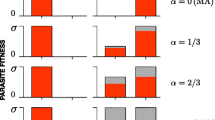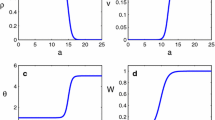Abstract
Ecological concepts and ecologists have played a prominent role in the development of two rather different kinds of models for dealing with consumer-resource relations. One kind can be called a population model because it represents a device employed to identify the ways in which a population is related to its resources and deals with some set of summary statistics that describe the population. The most fashionable population model is built around the concepts of r-species and K-species. The second kind of model is represented by Darwinian models. Darwinian models deal with relations within a single population and they have gained new utility through the use of energy budget concepts and life table statistics. Darwinian models must be species specific in order to deal with the interactions between the individuals of a population and be able to predict how the interactions may affect the contribution females make to the next generation.
Access this chapter
Tax calculation will be finalised at checkout
Purchases are for personal use only
Preview
Unable to display preview. Download preview PDF.
Similar content being viewed by others
Literature Cited
Kethley, J. B. 1971. Population regulation in quill mites ( Acarina: Syringophilidae). Ecology 52: 1113–1118.
Kethley, J. B., and D. E. Johnston. 1975. Resource tracking patterns in bird and mammal ectoparasites. Misc. Publ. Entomol. Soc. Amer. In press.
MacArthur, R. H., and E. O. Wilson. 1967. The theory of island biogeography. Princeton Univ. Press, Princeton, N.J. 203 pp.
Mitchell, R. 1955. Anatomy, life history and evolution of the mites parasitizing fresh-water mussels. Misc. Publ., Mus. Zool., Univ. Mich. 89. 28 pp.
Mitchell, R. 1964. A study of sympatry in the water mite genus Arrenurus ( Family Arrenuridae ). Ecology 45: 546–558.
Mitchell, R. 1965. Population regulation of water mite parasitic on unionid mussels. J. Parasitol. 51: 990–996.
Mitchell, R. 1967. Host exploitation of two closely related water mites. Evolution 21: 59–75.
Roeder, K. D., and A. E. Treat. 1957. Ultrasonic reception by the tympanic organs of noctuid moths. J. Exp. Zool. 134: 127–158.
Southwood, T. R. E., R. M. May, M. P. Hassell and G. R. Conway. 1974. Ecological strategies and population parameters. Amer. Natur. 108: 791–804.
Treat, A. 1957. Unilaterality in infestations of the moth ear mite. J. N. Y. Entomol. Soc. 45: 41–50.
Treat, A. 1958a. Social organization in the moth ear mite (Myrmonyssus phalaenodectes). Proc. 10th Int. Congr. Entomol. 2: 475–480.
Treat, A. 1958b. A five year census of the moth ear mite in Tyringham, Massachusetts. Ecology 39: 629–634.
Van Valen,L., and F. A. Pitelka. 1974. Commentary - intellectual censorship in ecology. Ecology 55: 925–926.
Wilbur, H. M., D. W. Tinkle and J. P. Collins. 1974. Environmental certainty, trophic level, and resource availability in life history evolution. Amer. Natur. 108: 805–817.
Author information
Authors and Affiliations
Editor information
Editors and Affiliations
Rights and permissions
Copyright information
© 1975 Plenum Press, New York
About this chapter
Cite this chapter
Mitchell, R. (1975). Models for Parasite Populations. In: Price, P.W. (eds) Evolutionary Strategies of Parasitic Insects and Mites. Springer, Boston, MA. https://doi.org/10.1007/978-1-4615-8732-3_3
Download citation
DOI: https://doi.org/10.1007/978-1-4615-8732-3_3
Publisher Name: Springer, Boston, MA
Print ISBN: 978-1-4615-8734-7
Online ISBN: 978-1-4615-8732-3
eBook Packages: Springer Book Archive




